Mui Ne Ward here is just the coastline from the beginning of Phu Hai Ward to the end of Ham Tien Ward (old Phan Thiet City, now Mui Ne Ward, Lam Dong Province). With a length of only about 7 km, this area is considered the "soul" of Mui Ne National Tourist Area with many high-class resorts, densely packed along the sea.
However, currently, the phenomenon of sea erosion eats deep into the shore, destroying beaches that are used as bathing places for tourists and local people. There are places where seawater encroaches dozens of meters into the land of resorts, knocking down old coconut trees into the sea; even sweeping away auxiliary structures built close to the sea. Not only causing property damage to investors, the phenomenon of erosion is making Mui Ne shabby.
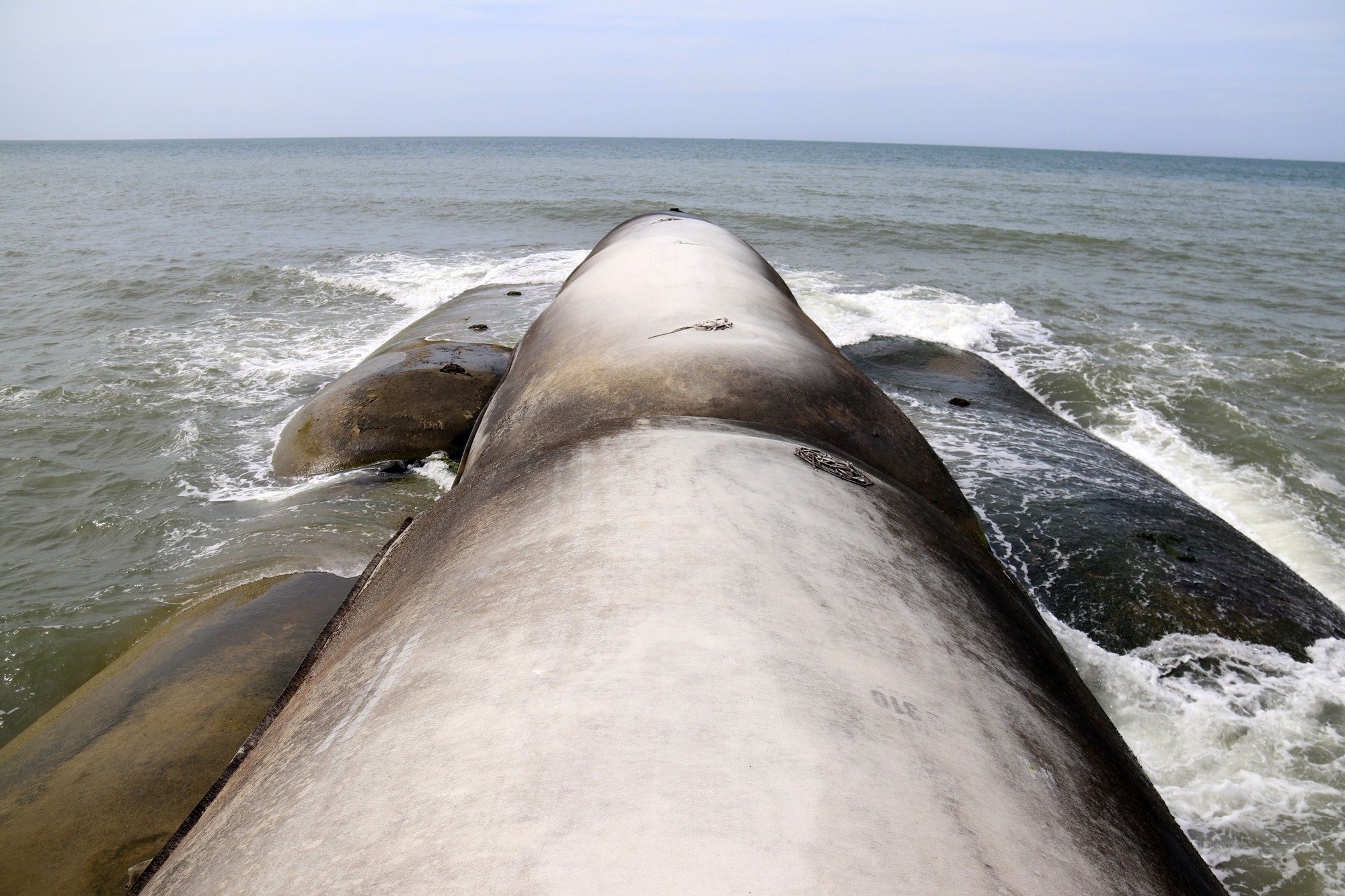
Soft seawalls made to break waves and protect the beach are likened to "monsters" on Mui Ne beach.
PHOTO: QUE HA
Mr. Phu, an employee of SG resort (Nguyen Dinh Chieu street, Mui Ne ward) said that his investor spent a lot of money to build a concrete embankment to protect the land. But only one year later, the waves ate into the shore, washing the embankment into the sea. "The investor spent a lot of effort and money, but the concrete embankment was not effective. Now, no matter how much it costs, we have to build a soft embankment to protect the shore," said Mr. Phu.
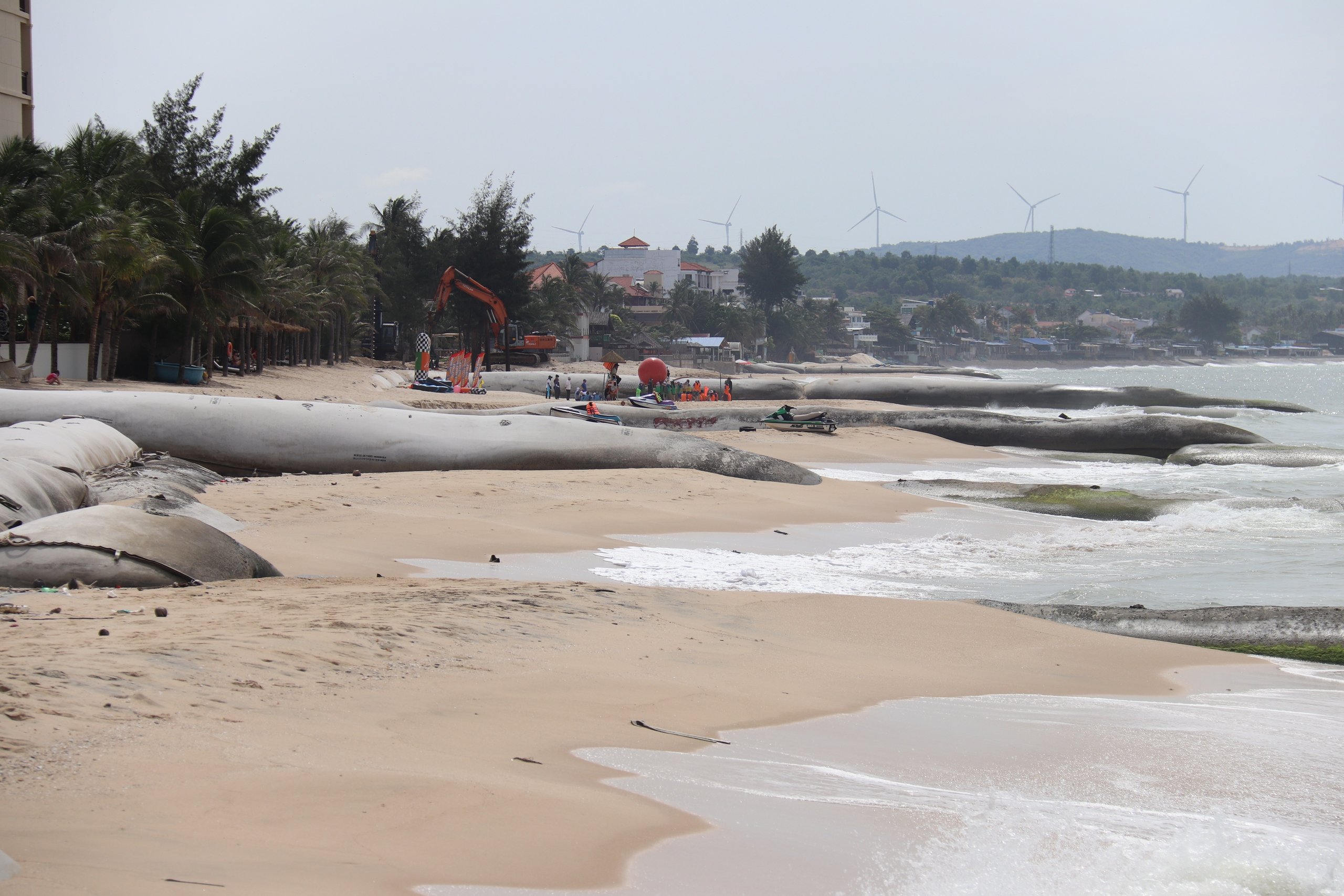
Soft embankments everywhere make Mui Ne beach "sloppier" than ever
PHOTO: QUE HA
According to Mr. Phu, like some other resorts nearby, the investor of this tourist facility has invested several billion VND to build a soft embankment to minimize property damage and create a beach. However, building a soft embankment makes it difficult for tourists to swim. And it contributes to making the beach look shabby and ugly in the eyes of tourists.
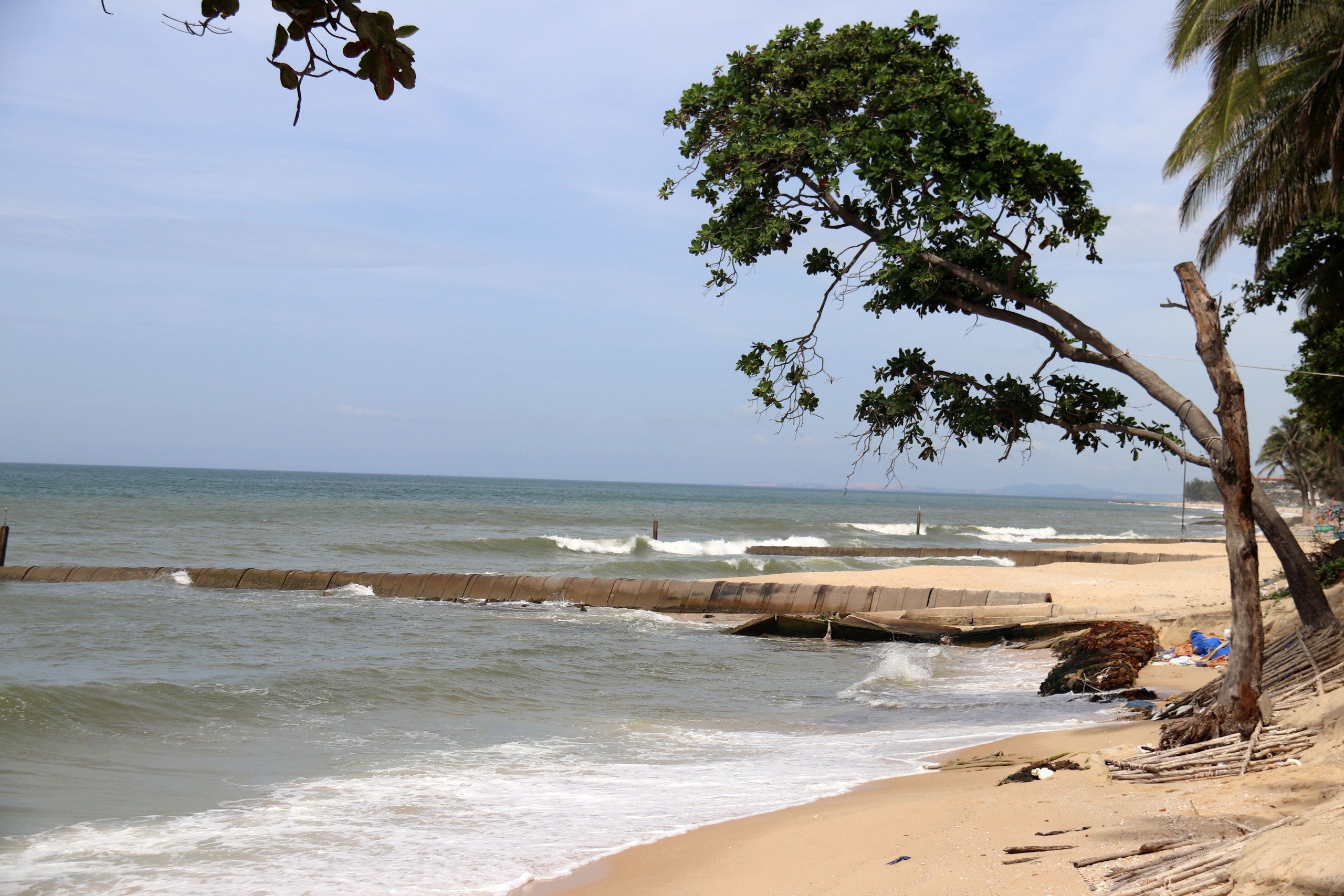
Many trees and properties of Mui Ne beach resorts have been torn down due to sea erosion.
PHOTO: QUE HA
Both ineffective and unsightly (?)
The sandy beach, although a common property, has long been the "private property" of tourist establishments. Because of the special feature of Mui Ne, all the resorts are located adjacent to the sea. Therefore, the beach and the coast are important factors, deciding for tourists to enjoy the values that nature bestows from the sea. This is also the factor that helps tourists decide whether to return to the resort next time.
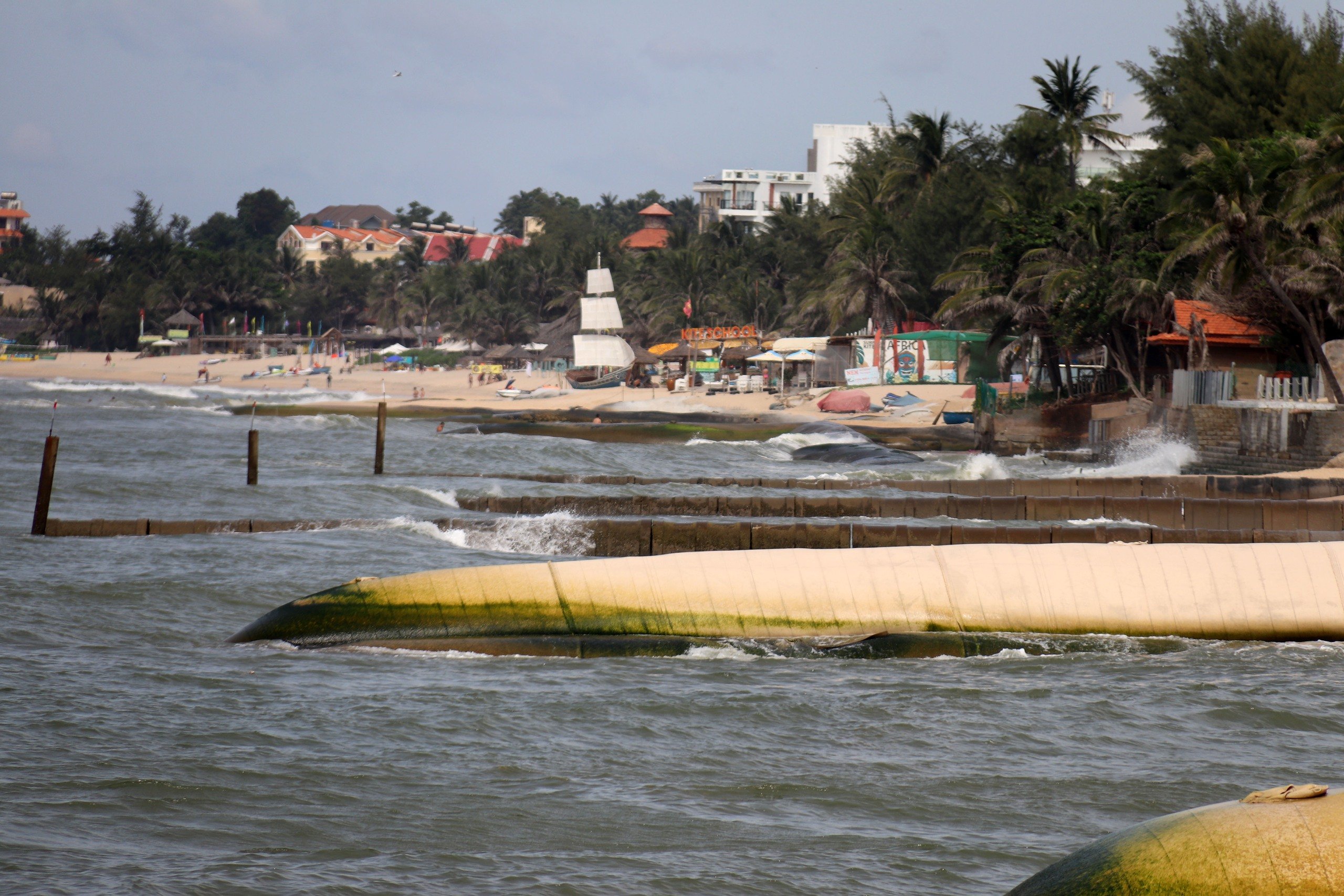
Sea erosion in Mui Ne takes away the beaches of locals and tourists...
PHOTO: QUE HA
Ms. An Tran, in charge of customer care at Ana resort, said that recently, many tourists checked out early, or when they arrived, they found the beach was not as beautiful as in the advertisement. They not only left, but also left complaints. "This is very annoying, but I don't know how to get the sand like before," Ms. An Tran said.
This is the reason why resort owners compete to build hard and soft embankments to try to keep the sand for their resorts.
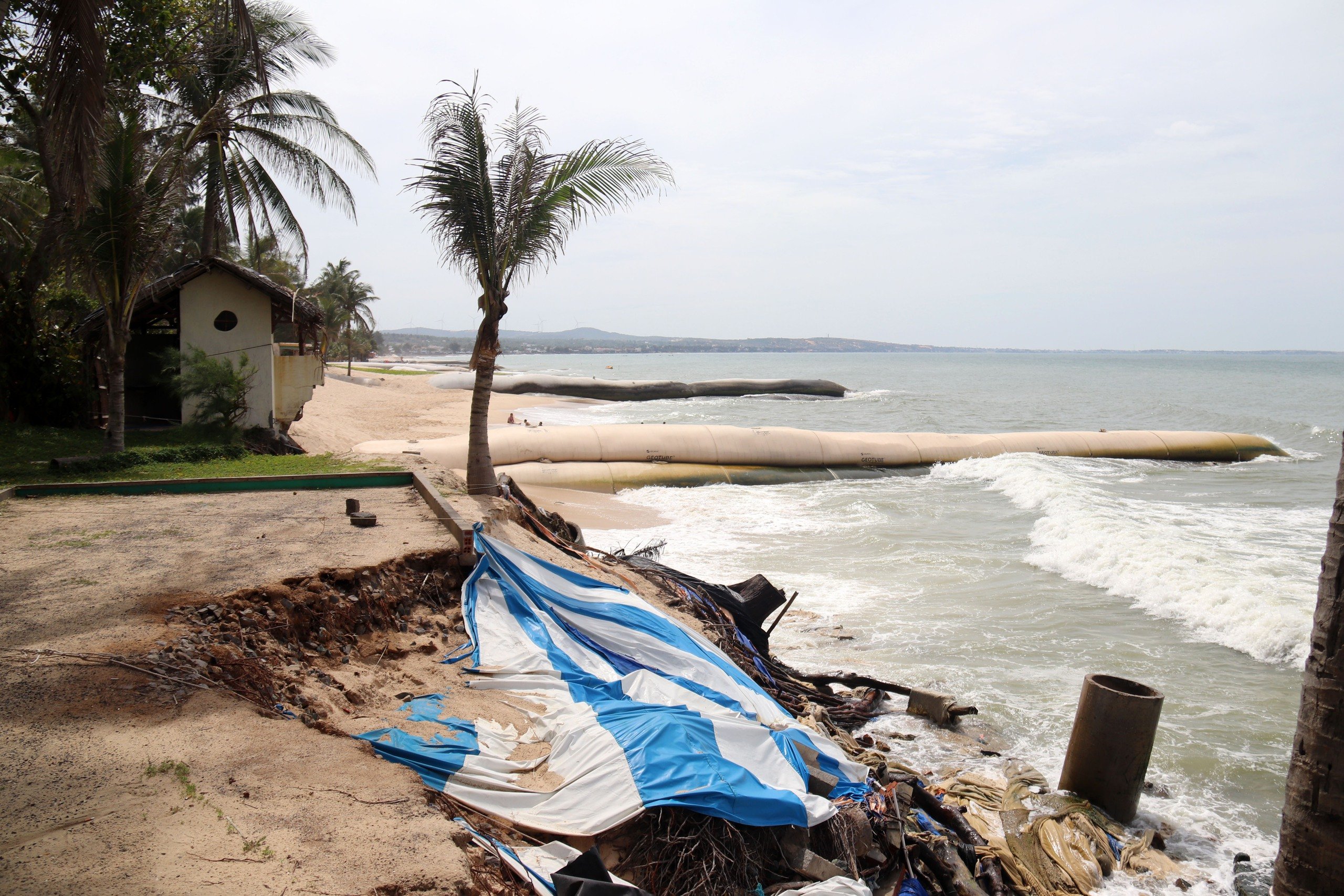
Tourism businesses are forced to find ways to combat sea erosion.
PHOTO: QUE HA
In some places, resort owners dumped huge boulders, rocks, or ledges (3-legged concrete blocks, tetrapods) in long streaks extending out to the sea to break the waves (called a groin dyke). In the section with many resorts in the center of Ham Tien Ward (old), many resort owners made sandbags with very large diameters, dropping them from the shore far out to sea (called a soft dyke).
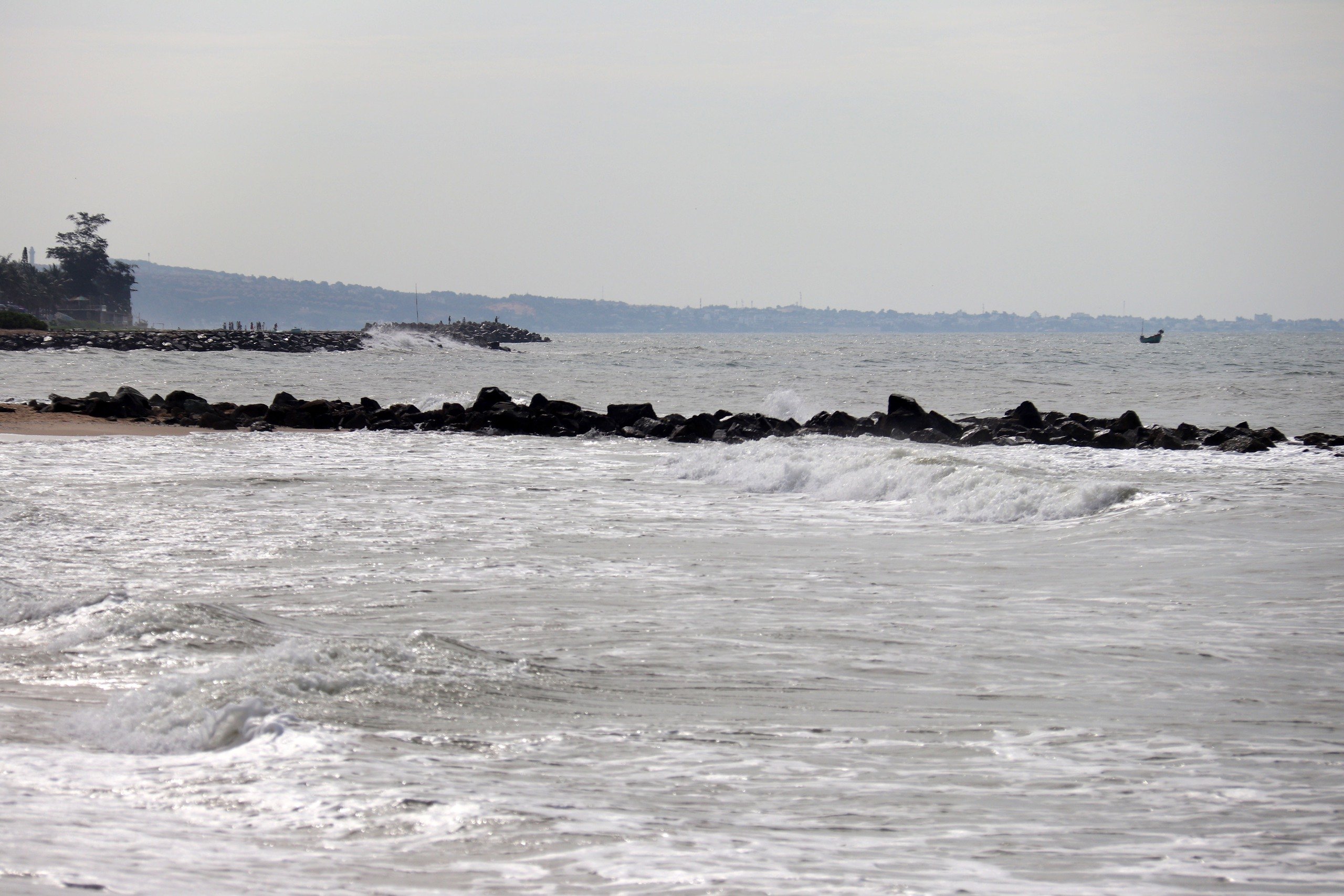
Soft embankment is still acceptable. At this location (old Phu Hai Ward), businesses also put boulders into the sea to make welding groins to withstand the waves.
PHOTO: QUE HA
Each side has a sandbag like that to block the eroding waves, creating a sandbank. However, viewed from the shore, the giant sandbags look like "monsters" lying across the sea, very unsightly for the beach.
Mr. NVT, a retired officer of the Department of Agriculture and Rural Development of Binh Thuan (formerly) said that previously, the People's Committee of Binh Thuan province had directed the Department of Agriculture and Rural Development to preside over and coordinate with the People's Committee of Phan Thiet City (formerly Binh Thuan) to survey and assess the erosion situation in this area. The purpose was to choose the most effective solution to both protect Mui Ne's coast and preserve the natural beauty for tourists and residents.
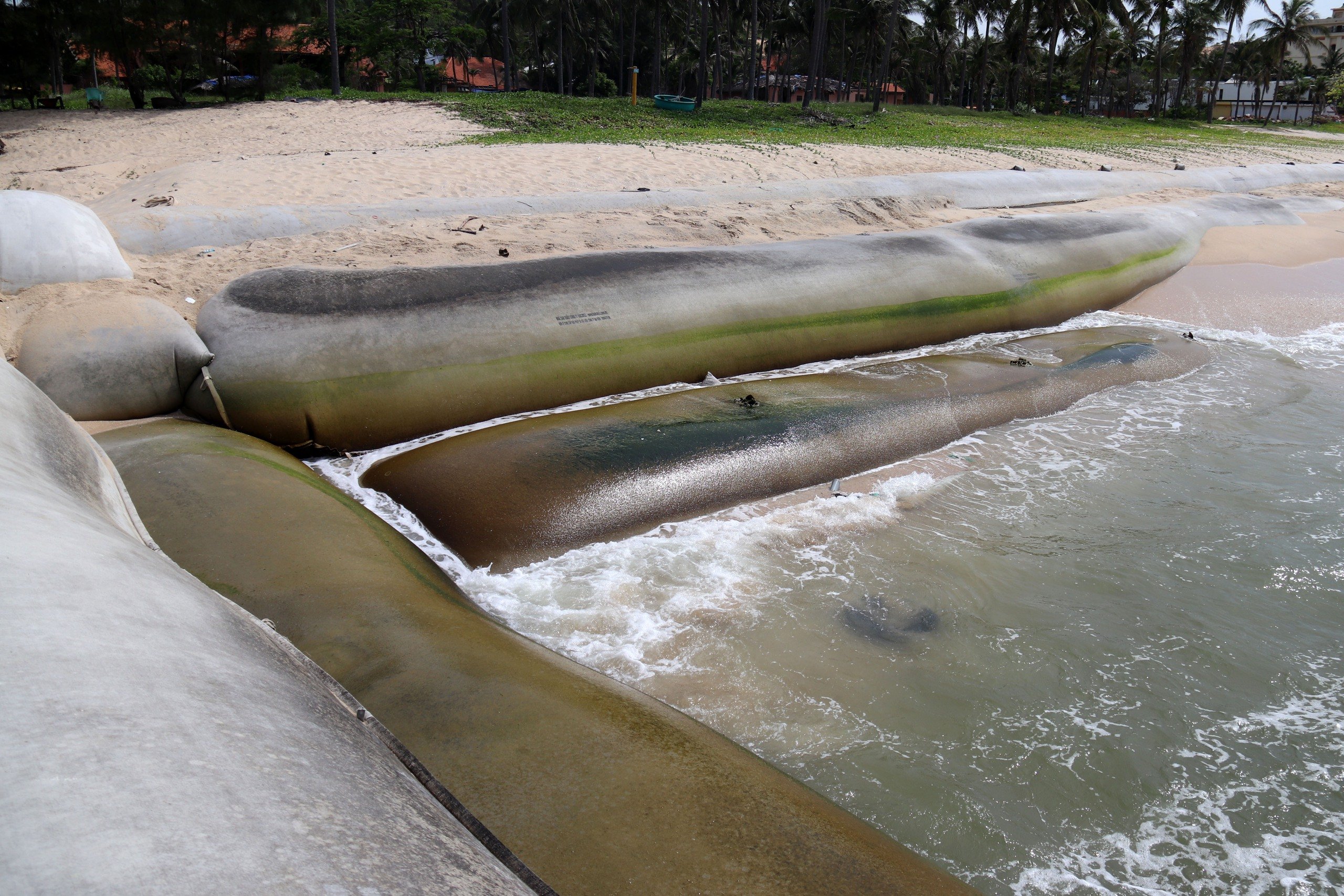
Not only did this resort build a soft embankment straight out to sea, it also built a soft embankment along the shore, leaving no place for tourists to go down to the sea.
PHOTO: QUE HA
On the other hand, according to experts, whether it is soft or hard revetment, if not deployed synchronously, while the shoreline can be maintained in one place, waves will destroy other places.
And this is the cause of sea erosion in Mui Ne year after year, with no effective solution.
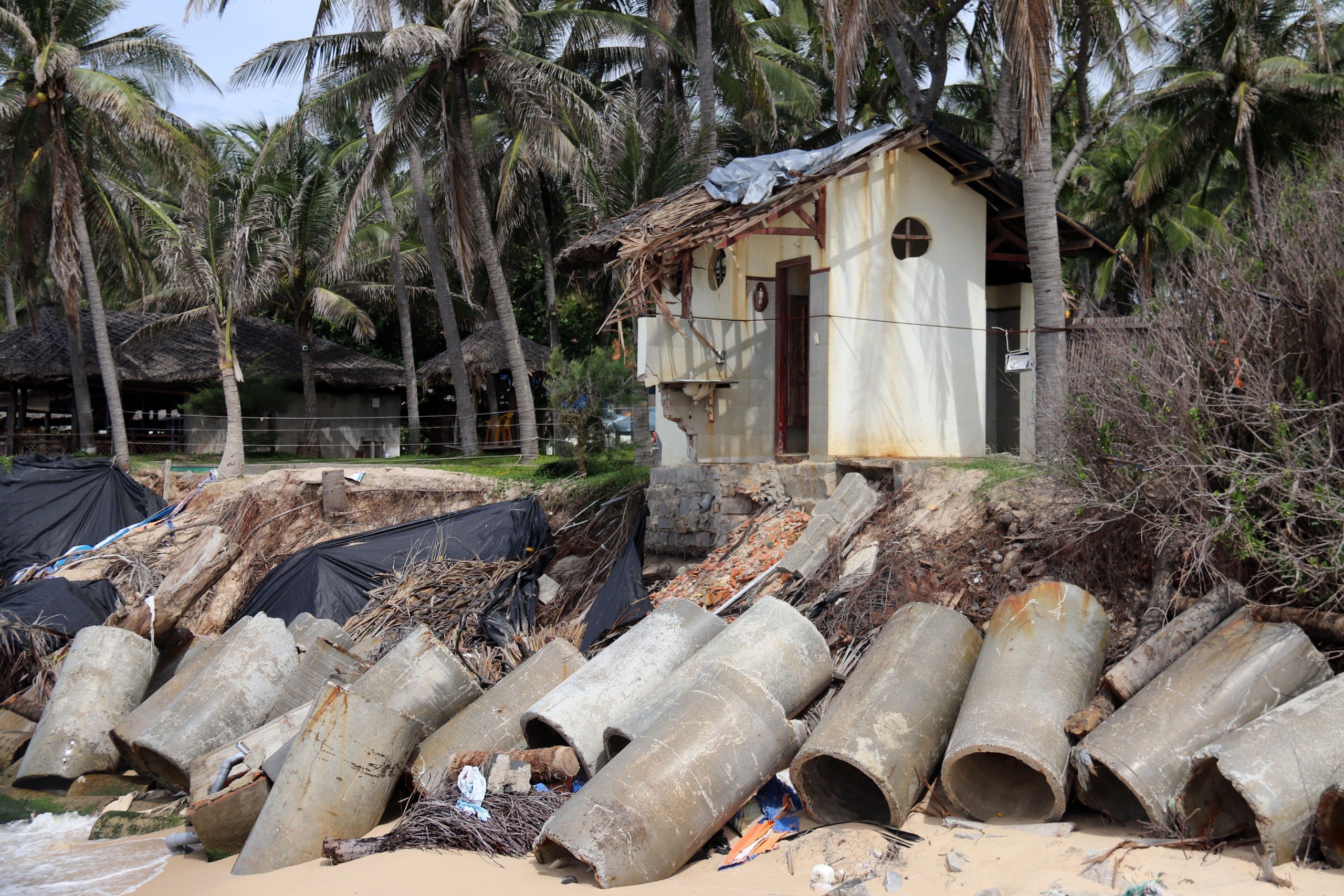
In places where there is no budget to build embankments, all kinds of materials such as pipes must be used to prevent landslides.
PHOTO: QUE HA
Not only damaging investors' property, erosion also destroys the poetic landscape of "blue sea, white sand, yellow sunshine" in Mui Ne.
Responding to Thanh Nien , Mr. Tran Van Binh, Vice President of Binh Thuan Tourism Association, said that management agencies and scientists need to conduct surveys to come up with a synchronous and scientific solution, aiming to minimize the cost for tourism investors, but still preserve the natural landscape of the long white sand beach.
"Mui Ne is now the gateway to the sea of Lam Dong province. The planning of Mui Ne must also be at the national level, not only for Lam Dong to develop, but also to connect the Central Highlands with the South Central Coast region in the strategy to promote economy, society, and maintain national security and defense," Mr. Tran Van Binh shared.
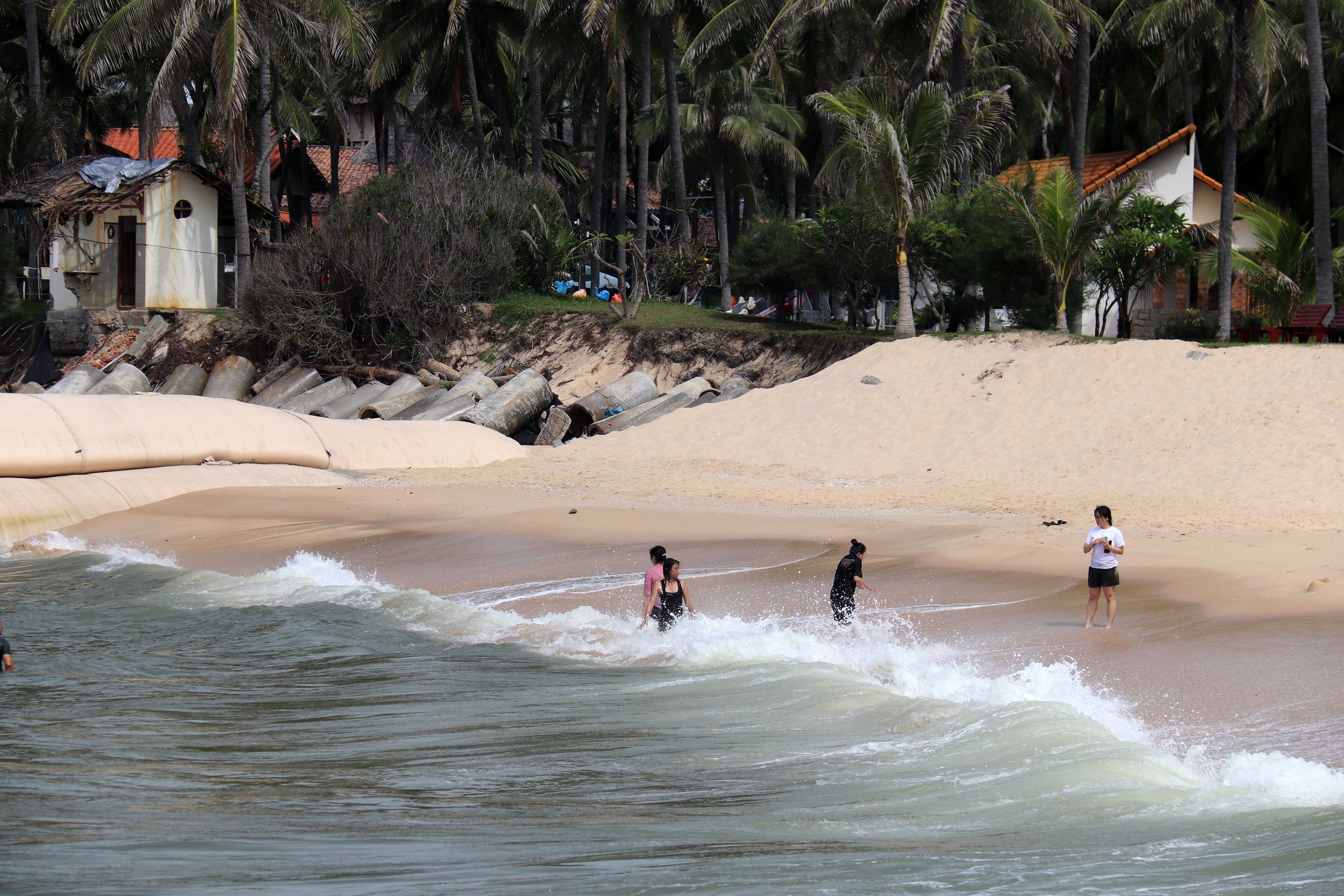
The resort is right next to the beach but it is difficult for tourists to get down to the beach to swim.
PHOTO: QUE HA
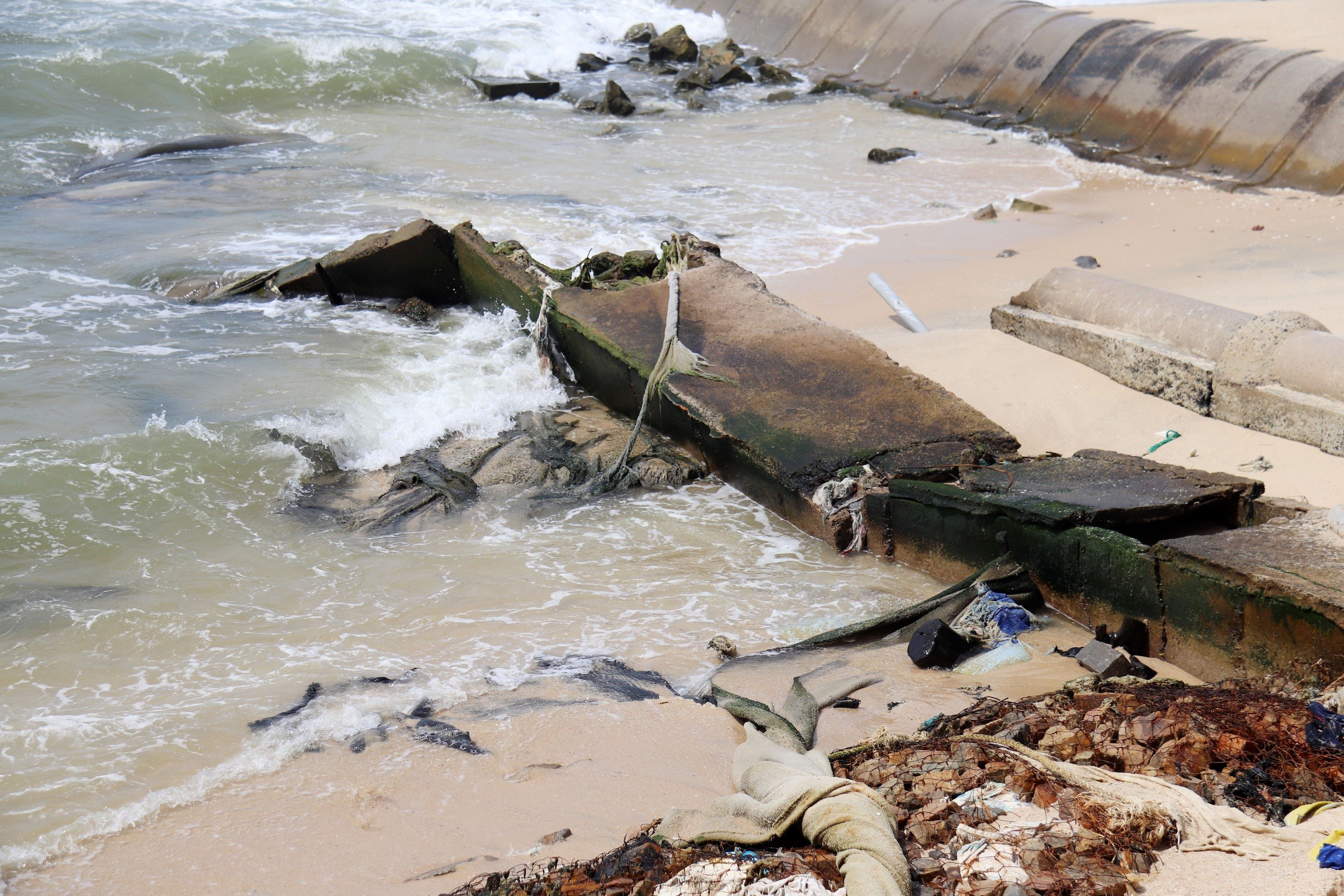
In this area, visitors cannot swim because boulders, concrete, and embankment materials are broken up by the waves and swept into the sea.
PHOTO: QUE HA
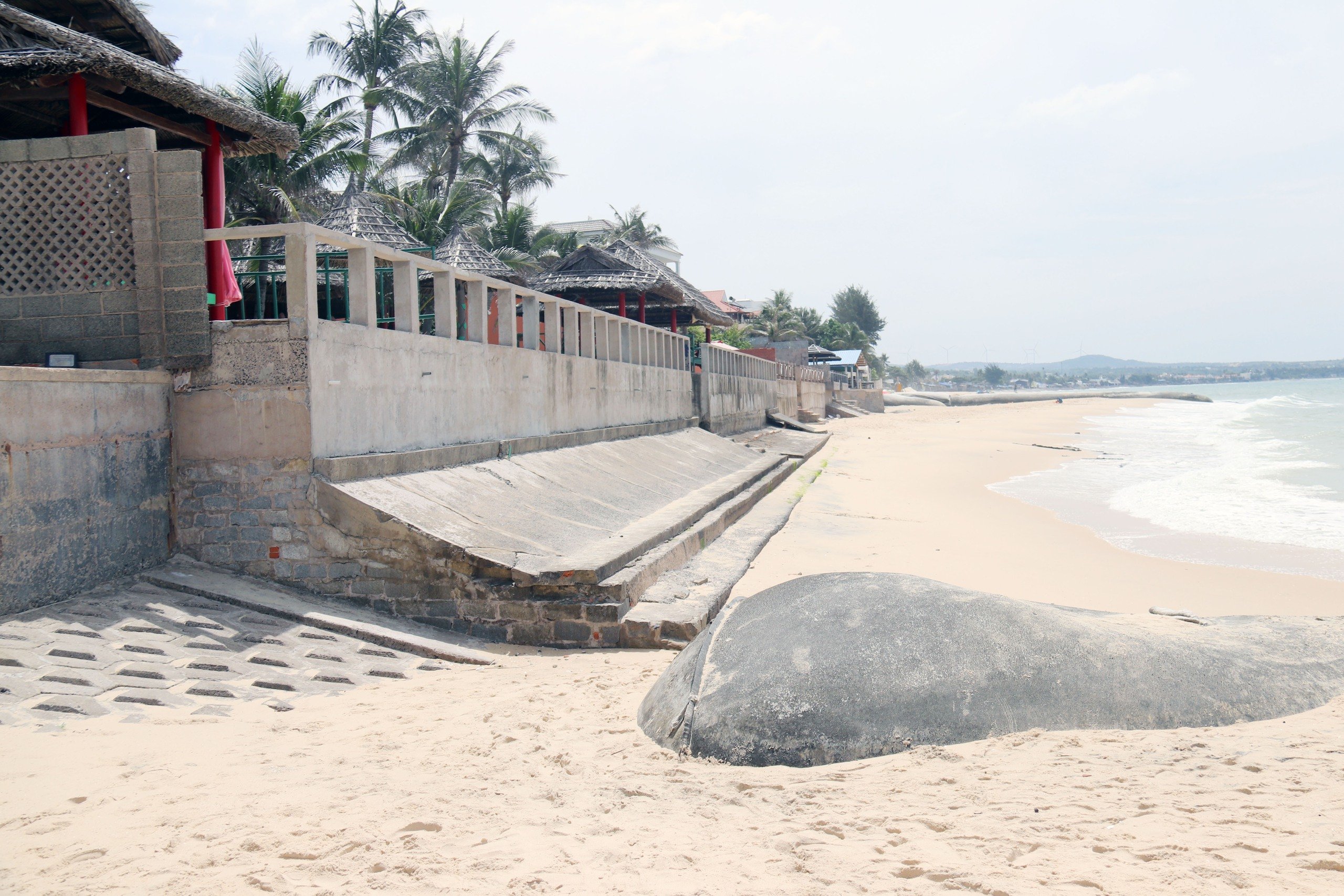
This resort is made of solid concrete to prevent erosion, only opening a small path for visitors to go down to the sea.
PHOTO: QUE HA
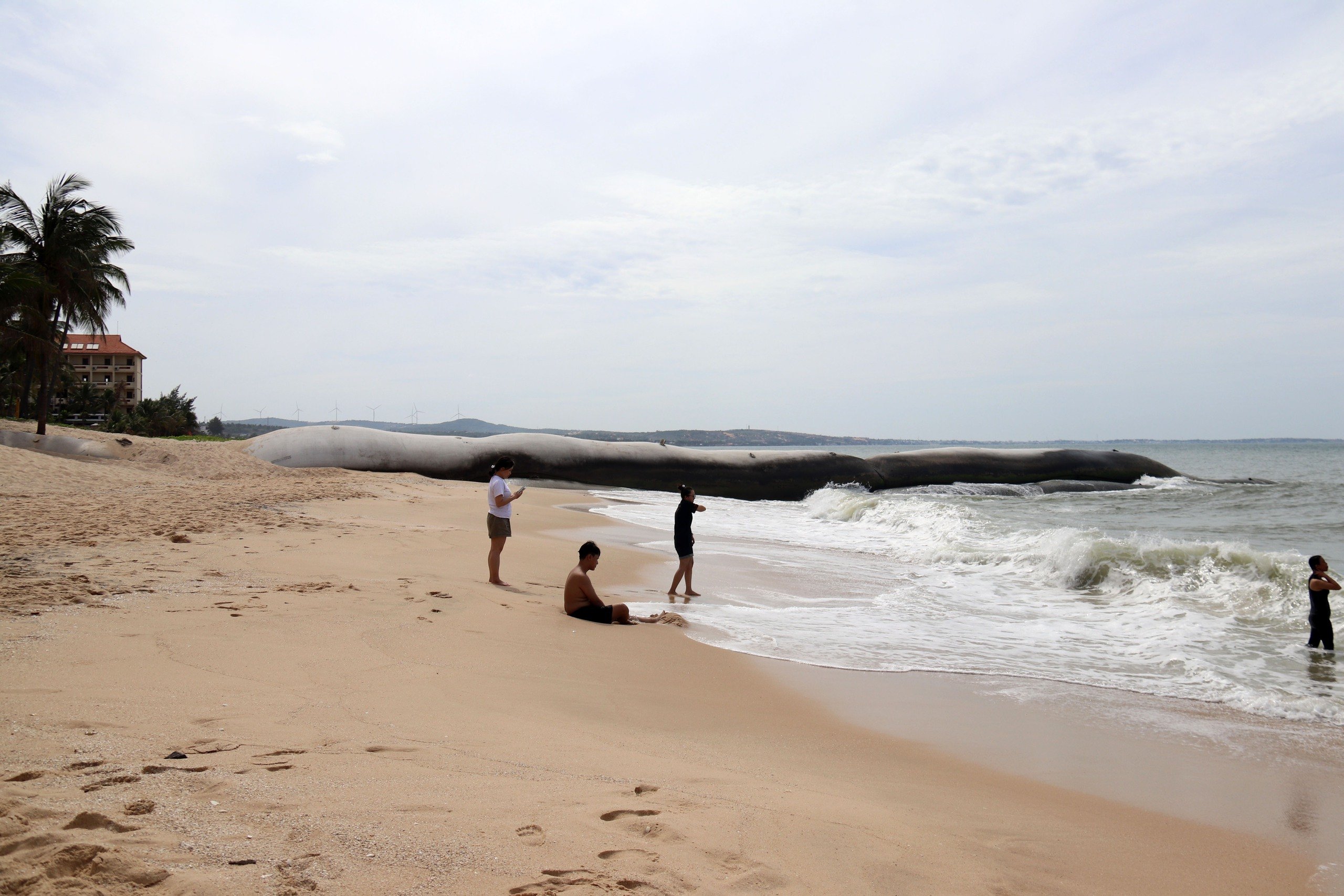
Tourists must swim next to "giant monsters"
PHOTO: QUE HA
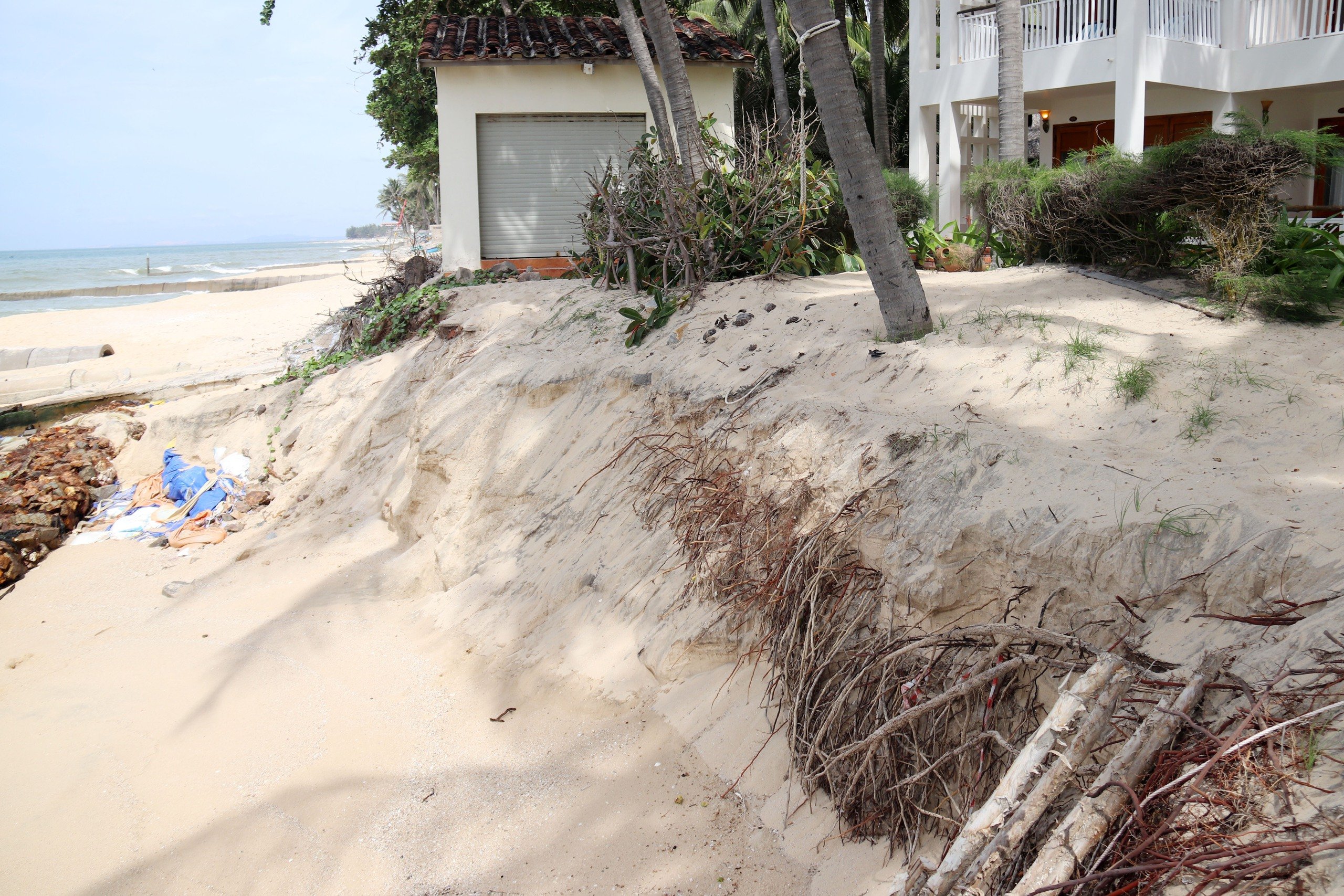
Constructions built close to the sea like this will be washed away by waves and collapse into the sea at any time if there is no breakwater.
PHOTO: QUE HA
Source: https://thanhnien.vn/nhung-con-quai-vat-tren-bai-bien-mui-ne-185250705151241859.htm






![[Photo] Hanoi morning of October 1: Prolonged flooding, people wade to work](https://vphoto.vietnam.vn/thumb/1200x675/vietnam/resource/IMAGE/2025/10/1/189be28938e3493fa26b2938efa2059e)






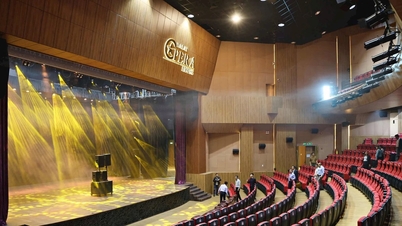

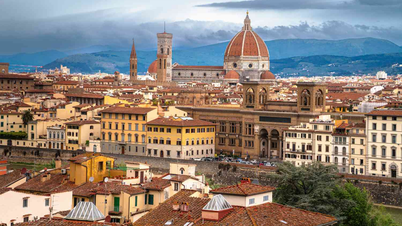

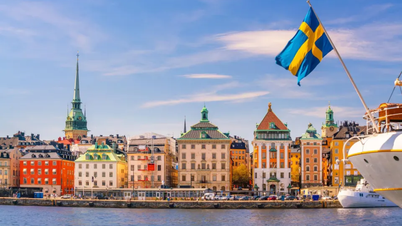
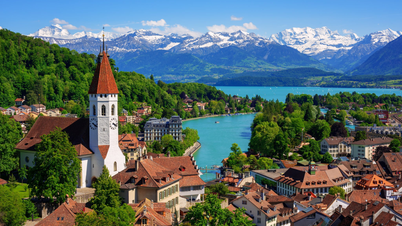



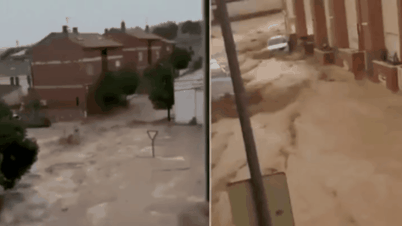











![[Photo] Panorama of the cable-stayed bridge, the final bottleneck of the Ben Luc-Long Thanh expressway](https://vphoto.vietnam.vn/thumb/1200x675/vietnam/resource/IMAGE/2025/9/30/391fdf21025541d6b2f092e49a17243f)
![[Photo] President Luong Cuong receives President of the Cuban National Assembly Esteban Lazo Hernandez](https://vphoto.vietnam.vn/thumb/1200x675/vietnam/resource/IMAGE/2025/9/30/4d38932911c24f6ea1936252bd5427fa)























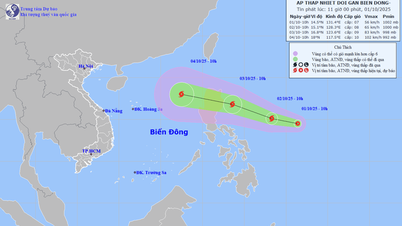


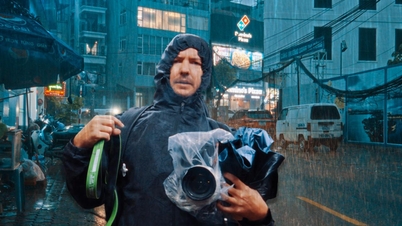







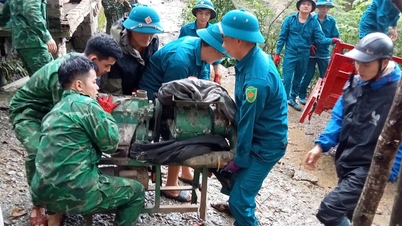






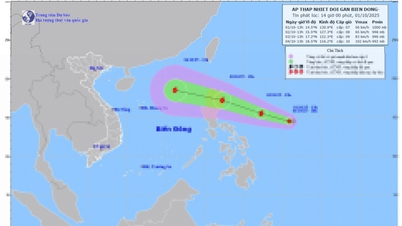
















Comment (0)